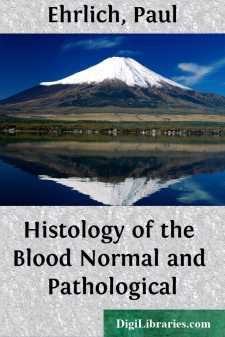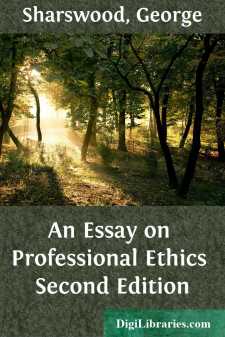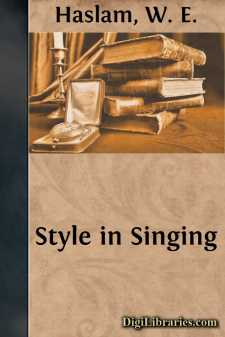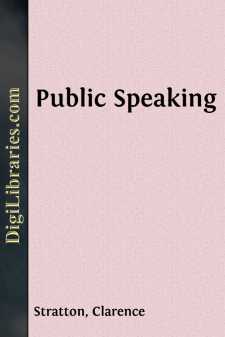Non-Classifiable
- Non-Classifiable 1768
Non-Classifiable Books
Sort by:
PERCY took a lesson in turning the cream separator and after dinner Mrs. Thornton assured him that she and her sister were greatly disappointed that they had not been permitted to hear the discussion concerning the use of science on the farm. "We have never forsaken our belief that these old farms can again be made to yield bountiful crops," she said, "as ours did for so many years under...
more...
by:
Edward Morton
CHAPTER I. Of the Breast-Milk, &c. &c. No sooner has the child been ushered into the world than the breasts of the mother pour forth their milk for its sustenance. This bland fluid is secreted from the blood, and varies, in quality and quantity, according to the time which has elapsed from delivery, being peculiarly and wonderfully adapted at every period to the wants of the individual for...
more...
by:
Paul Ehrlich
PREFACE. In no department of Pathology has advance been so fitful and interrupted as in that dealing with blood changes in various forms of disease, though none now offers a field that promises such an abundant return for an equal expenditure of time and labour. Observations of great importance were early made by Wharton Jones, Waller, and Hughes Bennett in this country, and by Virchow and Max Schultze...
more...
CHAPTER I METALS AND THEIR ALLOYS—HEAT TREATMENT THE METALS Iron.—Iron, in its pure state, is a soft, white, easily worked metal. It is the most important of all the metallic elements, and is, next to aluminum, the commonest metal found in the earth. Mechanically speaking, we have three kinds of iron: wrought iron, cast iron and steel. Wrought iron is very nearly pure iron; cast iron contains...
more...
EDITOR'S INTRODUCTION In presenting a second monograph on the rural school problem in this series we register our sense of the importance of rural education. Too long have the rural schools suffered from neglect. Both the local communities and the State have overlooked the needs of the rural school system. At the present hour there is an earnest awakening of interest in rural life and its...
more...
by:
George Sharswood
INTRODUCTION. The dignity and importance of the Profession of the Law, in a public point of view, can hardly be over-estimated. It is in its relation to society at large that it is proposed to consider it. This may be done by showing its influence upon legislation and jurisprudence. These are the right and left hands of government in carrying out the great purposes of society. By legislation is meant...
more...
PREFACE. In the literature of all countries there will be found a certain number of works treating especially of love. Everywhere the subject is dealt with differently, and from various points of view. In the present publication it is proposed to give a complete translation of what is considered the standard work on love in literature, and which is called the 'Vatsyayana Kama Sutra,' or...
more...
INTRODUCTORY Carpentry is the oldest of the arts, and it has been said that the knowledge necessary to make a good carpenter fits one for almost any trade or occupation requiring the use of tools. The hatchet, the saw, and the plane are the three primal implements of the carpenter. The value is in knowing how to use them. The institution of Manual Training Schools everywhere is but a tardy recognition...
more...
by:
W. E. Haslam
PREFATORY NOTE “OF making many books there is no end.” Surely, the weary observation of the sage must have an especial application to the literature of Song. One could not number the books—anatomical, physiological, philosophical—on the Voice. A spacious library could easily be furnished with “Methods” of Singing. Works treating of the laws governing the effective interpretation of...
more...
CHAPTER I SPEECH Importance of Speech. There never has been in the history of the world a time when the spoken word has been equaled in value and importance by any other means of communication. If one traces the development of mankind from what he considers its earliest stage he will find that the wandering family of savages depended entirely upon what its members said to one another. A little later...
more...











